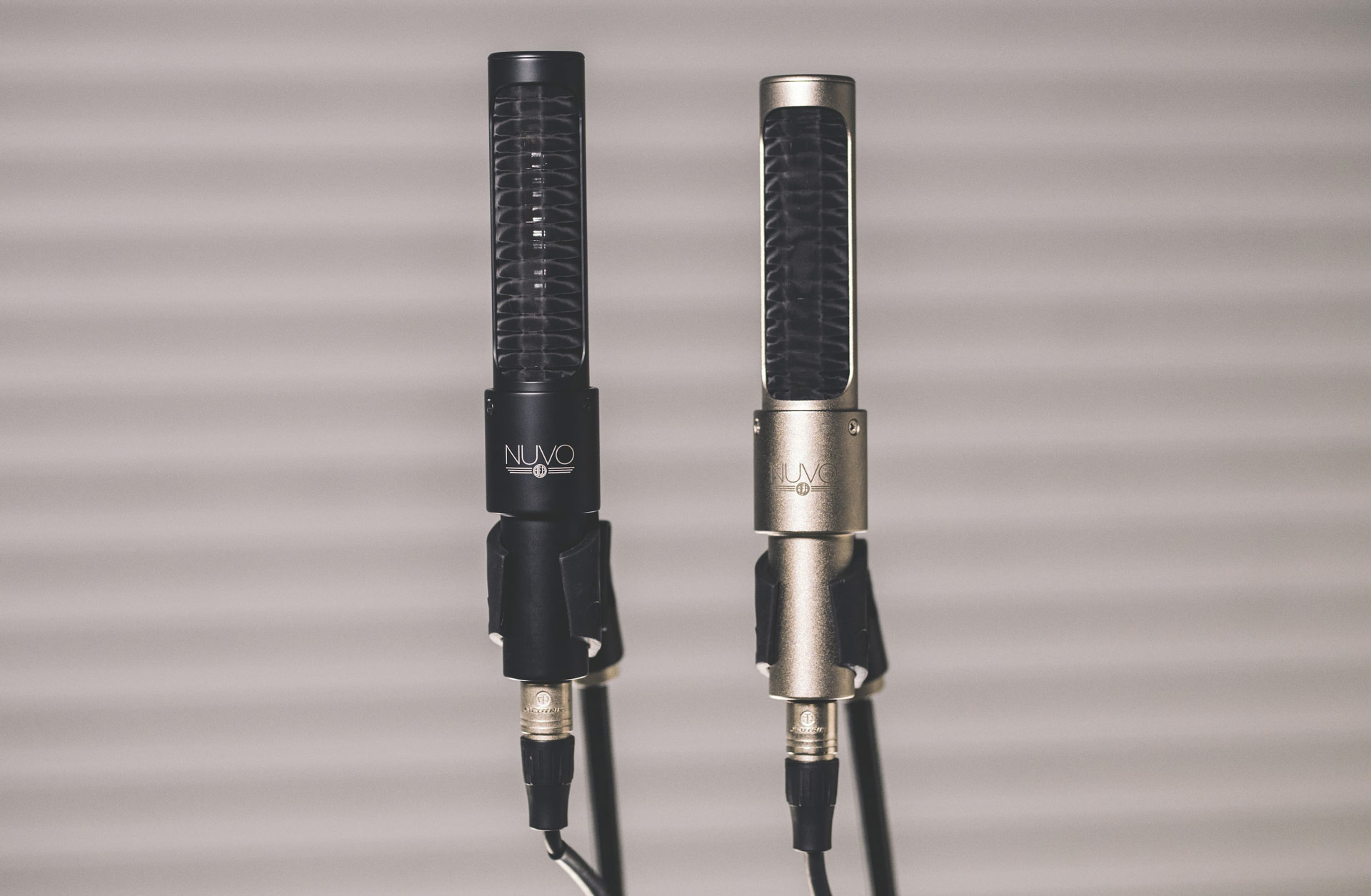BEHIND THE MIC: THE AEA TRP RIBBON MICROPHONE PREAMPS


The AEA NUVO Series N22 and N8 Ribbon Mics look very similar on the surface, but their tone and functionality provide a wide spectrum of distinct and different characteristics and applications.
The N8 is intended to be used mainly as a far-field mic. Most traditional ribbons were designed for capturing sources from a distance. Only recently have near-field ribbon microphones become popular, with designs more rugged and compact in size. The N22’s feature set allows it to function as a near-field mic.

Every ribbon mic has an optimal distance from which they perform without sacrificing low-end or high-end, delivering what is called a balanced treble-to-bass ratio. The N8 NUVO Far was designed to have equal amounts of treble and bass from as far 20 feet (6 meters) from the source. Two thin layers of silk wrapped around the N8’s BigRibbon allow it to effortlessly capture a wide open, natural sound that is ideal for capturing any sized room, and can easily handle the dynamics of drum overhead duty, the nuance of string ensembles and the full range frequency response of a grand piano.


In order to expand beyond the decades of ribbon mics’ far-field dominance, AEA introduced a new generation of ribbon mics when it debuted the N22 NUVO Near, which delivers a balanced treble and bass ratio from a much closer working distance and naturally reduces proximity effect while minimizing room tone that can often cause problems in smaller spaces or iso booths. The N22 houses a meticulously tuned high-pass filter which allows the mic to be placed right up against an instrument or amp without the use of an EQ circuit, creating a more nuanced sound than rolling off the low-end with EQ.
Unlike far-field ribbon mics, N22’s optimal distance for miking is between one and 18 inches (2 cm – 0.5 meters). This makes it perfect for electric guitar and bass cabinets, kick drum, acoustic guitar and of course, vocals. Because the midrange and top-end are not obscured by proximity effect, it also alleviates the need to blend an additional dynamic mic to add more bite. For engineers accustomed to using other ribbon mics, the flexibility of being able to position the N22 right against a guitar cab can be mind-blowing!
The first thing to decide is how much room tone and natural ambience you want in your recordings. This is directly linked to how close your mic is positioned to the source — the closer to the source you place your mic, the more direct sound and less room tone will be captured. The further from the source you place your mic, the less direct sound and the more room tone will be recorded.
If you’re looking for a more direct sound with a minimal amount of room tone, the N22 NUVO Near is a great first option because it has less proximity effect so it allows you to get right up against the source while still retaining a balanced sound. The N22 sounds perfectly balanced at about 2 inches (5 cm) away from a guitar amp. Because the front side of the mic is placed very close to a loud source, the mic does not capture much room tone. This is perfect for engineers who want the pure sound of the instrument with limited ambience. It is also a solution for people who are in less than ideal rooms allowing them to achieve a balanced sound without adding any unwanted room tone.
Depending on the sound you’re going for, a little room tone can make your recordings sound very natural.The N8 NUVO Far is also a fantastic choice for guitar amps, but sounds much more balanced. From a foot away (0.3 meters), there will not be an overwhelming amount of room tone – just enough to sound different than positioning it right up against the source.
Microphones can be like artist’s paint brushes – each a magic wand with specific attributes that allows the painter to weave different colors and textures across a canvas. The more experienced the artist becomes with the special nature of each brush, the more proficient they are at creating increasingly subtle art.
Now that we’ve told you how these two microphones were designed, it should be noted that all rules can – and should – be broken when it’s right for your situation. Steve Albini loves the N8 on electric guitars while Wilco’s favorite electric guitar mic is the N22. Mick Conley favors the N22 on overheads and Chris Koltay uses N8s both live and in the studio on overheads. In the end, what matters is the tone each artist is trying to capture. There are no application rules with any AEA mic (other than don’t use them to record canned air to emulate Joy Division’s hi-hat sound).
Each AEA microphone is a specific artistic tool engineered for a palette of uses. The best way to find out which microphone works best for you is to try them in your space with your music. Fortunately, the N22 NUVO Near and N8 NUVO Far are low enough in cost to make them easy to add to any mic locker.
For the ultimate in flexibility and the widest possible sonic spectrum, try a “mismatched pair” – one of each!